
Ice Baths: A Key to Enhanced Recovery and Vitality for Athletes
Explore how ice baths can boost recovery and enhance vitality for athletes. Discover practical tips and insights to elevate your performance. Read more!
Spend Over £500 To Get Free UK Delivery - Excludes Certain Postcodes & Round Ice Baths
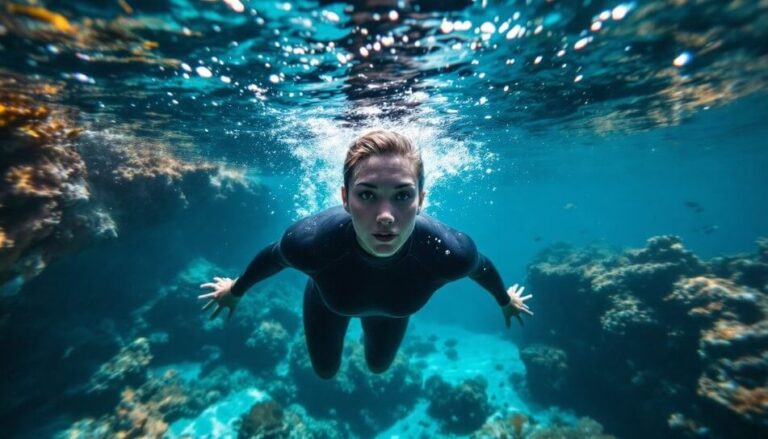
Looking for tips for swimming in cold water? This guide covers safety, gear, and mental preparation to ensure a comfortable and secure swim.
Cold water swimming offers unique health benefits, but preparation and proper gear are essential for safety.
Gradual exposure and mental conditioning are key to adapting to cold water and enhancing endurance.
Always prioritize safety by entering the water slowly, using visibility gear, and swimming with a buddy.
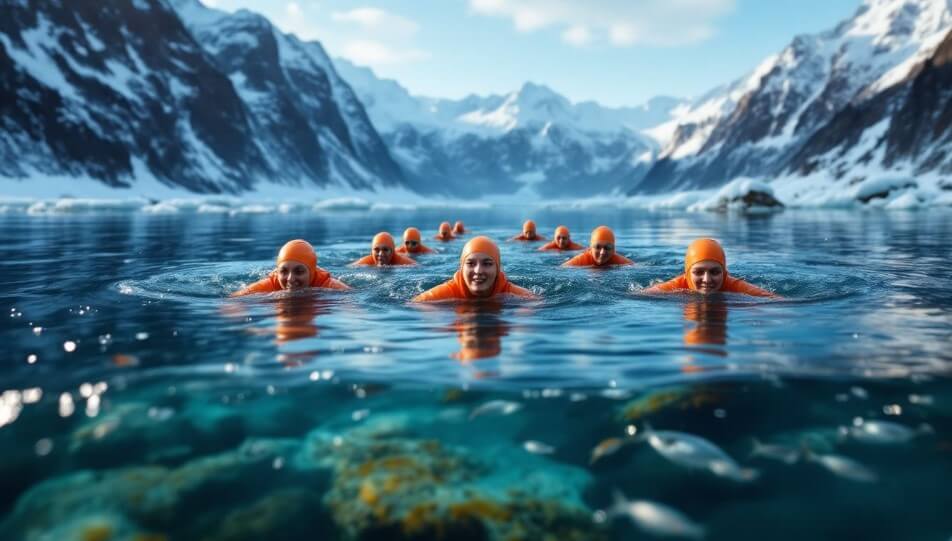
Cold water swimming involves immersing oneself in outdoor cold water bodies such as lakes or oceans, often during the chillier months. This practice is not just for the thrill-seekers; it offers a unique way for an outdoor swimmer to keep swimming year-round without the confines of indoor pools. Many are drawn to the crisp, invigorating sensation and the reported health benefits of ice swimming and a cold swim.
However, swimming in cold water is not without its challenges. The immediate shock to your system can cause breath loss, numbness, and even feelings of fear and helplessness. Hypothermia is a significant risk, especially when the water temperature drops below 5 degrees Celsius. Preparing for these challenges can enhance your safety and enjoyment.
Despite the potential risks, the benefits of cold water swimming are substantial. Regular exposure can boost your immune system, improve circulation, and even heighten your sense of awareness and mood. Beginners should read up on safety tips and gradually build confidence through exposure. Balancing the exhilarating benefits with informed caution is crucial.
Cold water swimming demands both mental and physical fortitude. Gradual and consistent exposure helps your body and mind adapt to the harsh conditions. Typically, noticeable improvements in cold tolerance can be seen after 2-4 weeks of regular exposure. Engaging in cold water swimming 3-4 times a week can significantly enhance your endurance and resilience.
Mental preparation is equally important. Regular practice helps build mental toughness against the initial shock of cold water. Warming up before a swim raises your core temperature, preparing your body for the cold.
Begin with short sessions and gradually increase their duration to acclimate safely. Practicing in various conditions prepares you for unpredictable environments.
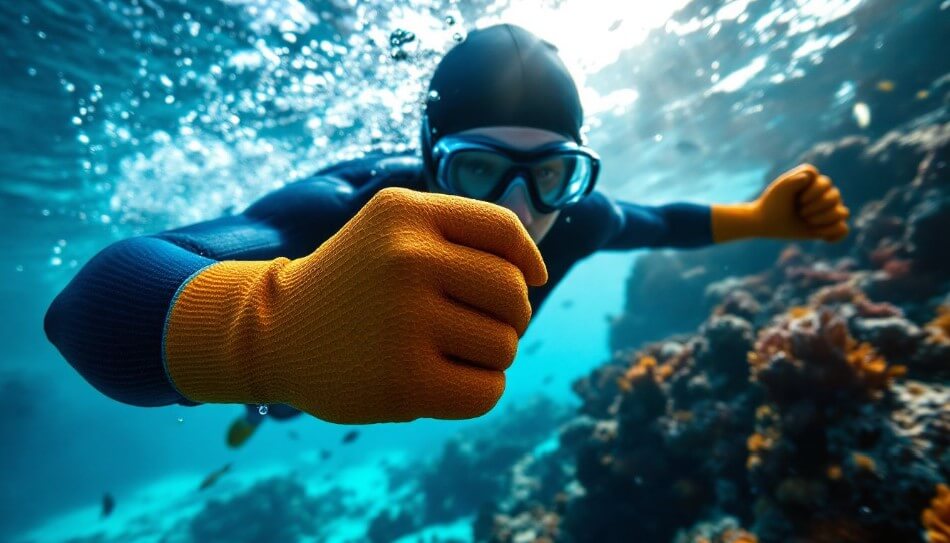
The right equipment is pivotal for safe cold water swimming. Proper gear enhances comfort and extends the time you can stay in the water. From thermal wetsuits to visibility aids, each piece of equipment plays a crucial role.
Must-have gear for cold water swimmers includes:
Neoprene wetsuits are a game-changer for cold water swimming. Designed to trap a thin layer of water between your body and the suit, this water is then warmed by your body heat, providing excellent insulation. A snug fit maximizes warmth and prevents cold water from seeping in. For most cold water swimmers, a wetsuit with a thickness of 4 to 6 mm is recommended to maintain body heat in chilly conditions.
Additionally, neoprene gloves and booties can protect your extremities from the cold, further enhancing your comfort and reducing the risk of cold water shock.
Investing in a quality wetsuit makes winter or wild swimming more enjoyable.
Significant body heat is lost through the head, making headgear crucial. A combination of a swim cap and neoprene hat provides excellent insulation. Fleece-lined hats are also a great option for additional warmth and should be washable to withstand sea water.
Neoprene gloves are highly recommended for your hands. They keep your hands warm and protect them from scrapes and cold water shock. Combined with neoprene booties, these accessories ensure that your extremities are well-protected, allowing you to enjoy your swim without discomfort.
Safety in cold water swimming is paramount, and visibility equipment plays a crucial role. Brightly coloured swim caps enhance your visibility to other swimmers and lifeguards, increasing your safety in open water. Tow floats not only make you more visible but also serve as handy dry bags for personal belongings.
Being visible to others is a simple yet effective safety measure.

Safe entry into cold water helps avoid shock and ensures a pleasant experience. Warming up raises your core temperature and heart rate, improving flexibility and reducing shock risk. Regular swimming helps acclimatize and manage cold water shock better.
Slow breathing techniques upon entry aid in acclimatization. Gradual entry and proper breathing strategies ease your body into cold water. Let’s explore these techniques in detail.
Entering the water slowly helps avoid the shock of cold temperatures. Gradually wading into the water, staying in the shallows until you can control your breath, and splashing water on your face are effective techniques to help your body adjust to the temperature. Warming up before your swim increases heart rate and core temperature, aiding in shock management.
Exiting gradually prevents a sudden temperature drop, reducing shock risk. Be mindful of slippery or rocky patches to avoid injuries.
The initial cold water shock can provoke a gasp reflex, making it crucial to manage this cold water shock response when entering the water. Exhaling forcefully can help manage the gasp reflex during cold water entry. Calm and slow breathing controls the body’s response to cold water immersion.
Deep, steady breaths help acclimatize to cold water, allowing for comfortable and safe swimming. Mastering these breathing techniques can significantly enhance your cold water swimming experience.
Once you’re in the water, maintaining control over your breathing is key. Cold water can cause rapid body temperature drops, increased heart rate, and hyperventilation. Calm breathing helps regain control. Beginners should start with short sessions and gradually increase duration.
Factors like sleep, diet, and recent acclimatization influence your cold water tolerance and water temperatures. Acknowledge your limits and prioritize safety. Watch for signs of hypothermia like uncontrollable shivering, chattering teeth, and slurred speech. The Golden Rule of winter swimming is to get out of the water while you are still smiling to prevent overexposure.
Take essential steps to stay safe while swimming. Know when to exit and always swim with others to monitor for hypothermia.
After exiting, your core temperature can continue to drop due to afterdrop. Start warming up immediately after swimming to prevent afterdrop and return to normal temperature. Avoid immediate hot showers because rapid temperature changes can be harmful.
Change immediately, dry off, add warm layers, and have a warm drink to warm up. Stand on a surface while changing to prevent heat loss through your feet. Eating and drinking help generate body heat after a swim.
Post-swim care restores comfort and safety after a cold water swim. A warm environment, like a car with the heater on, can be very beneficial. Sipping a warm drink provides psychological comfort, even if it has minimal impact on core temperature.
These cold water swimming tips enhance your overall cold water swimming experience.
Change out of wet clothes into dry, warm layers to mitigate the afterdrop effect. Standing in a thermos of warm water while changing prevents heat loss through your feet.
Packing warm drinks and snacks helps recover energy after swimming, making the transition to warmth more comfortable.
A small amount of hot drink provides psychological comfort after a swim, even if it doesn’t change core temperature significantly. Having a hot shower ready can enhance comfort during the recovery process.
Hot drinks in your post-swim routine benefit both physical and mental comfort.
Safety precautions are crucial when swimming in cold water. Swim with a buddy to monitor for hypothermia, enhancing safety. Check the weather, waves, and water clarity to evaluate swimming safety conditions.
Swim at venues with qualified lifeguards and inform them if it’s your first cold water swim.
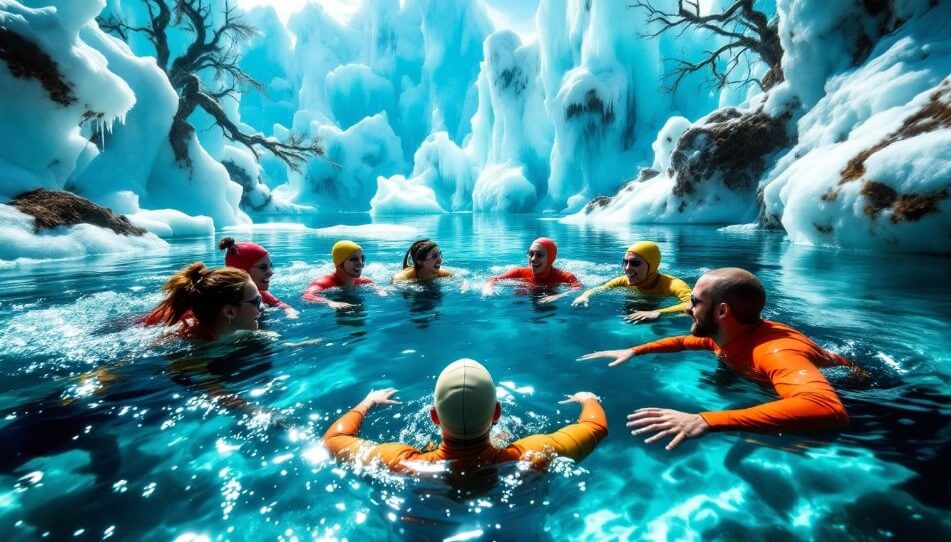
Regular cold water swimming offers numerous benefits, including:
Boosting your immune system
Improving circulation
Reducing inflammation
Enhancing your mood
Increasing alertness
Reducing stress levels
Winter swimming promotes community bonding and increases happiness.
Psychological benefits include increased happiness and reduced anxiety, fostering a sense of community. Regular exposure to cold water can also improve skin health by tightening pores and reducing inflammation.
In conclusion, cold water swimming is a thrilling and beneficial practice that requires careful preparation and safety measures. Understanding the challenges and benefits, preparing mentally and physically, using the right gear, and following safety precautions can make your cold water swimming experience enjoyable and safe. Dive in, embrace the cold, and experience the exhilarating benefits for yourself.
To effectively acclimatize to cold water, swim 3-4 times a week, and you’ll likely see improvements in your tolerance within 2-4 weeks. Stay consistent, and you’ll build resilience!
For cold water swimming, a wetsuit thickness of 4 to 6 mm is your best choice to keep warm and safe. Gear up with the right thickness and conquer those chilly waters!
To effectively manage initial cold water shock, enter the water gradually and focus on slow, deep breathing while exhaling forcefully. This will help you stay calm and acclimatize to the temperature.
To recover effectively after exiting cold water, quickly change into dry, warm layers and start warming up gradually. Sip on warm drinks to help your body regain its temperature safely!
Regular cold water swimming can significantly enhance your well-being by boosting your immune system, improving circulation, and lifting your mood. Embrace this invigorating practice for a healthier, happier you!

Founder of Urban Ice Tribe

Explore how ice baths can boost recovery and enhance vitality for athletes. Discover practical tips and insights to elevate your performance. Read more!

There’s nothing quite like the raw, elemental power of a pop-up sauna. Portable, authentic, and deeply restorative, it’s the perfect way to reconnect with nature and yourself. But to take your sauna ritual to the next level, the right sauna accessories can make all the difference.
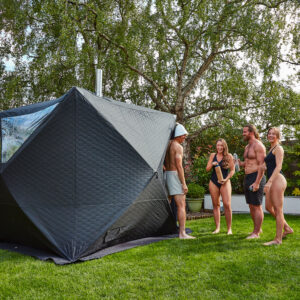
Transform your outdoor space into a personal wellness retreat with the Urban Ice Tribe Sauna Tent. This detailed setup guide walks you through every step, from unboxing to your first steam session, blending practical instruction with the mindful ritual of heat therapy.
Helping men & women release anxieties & limiting beliefs to experience a life of freedom using powerful breathwork, cold water therapy, movement & sound healing.

No spam, notifications only about new products, updates, offers and announcements.